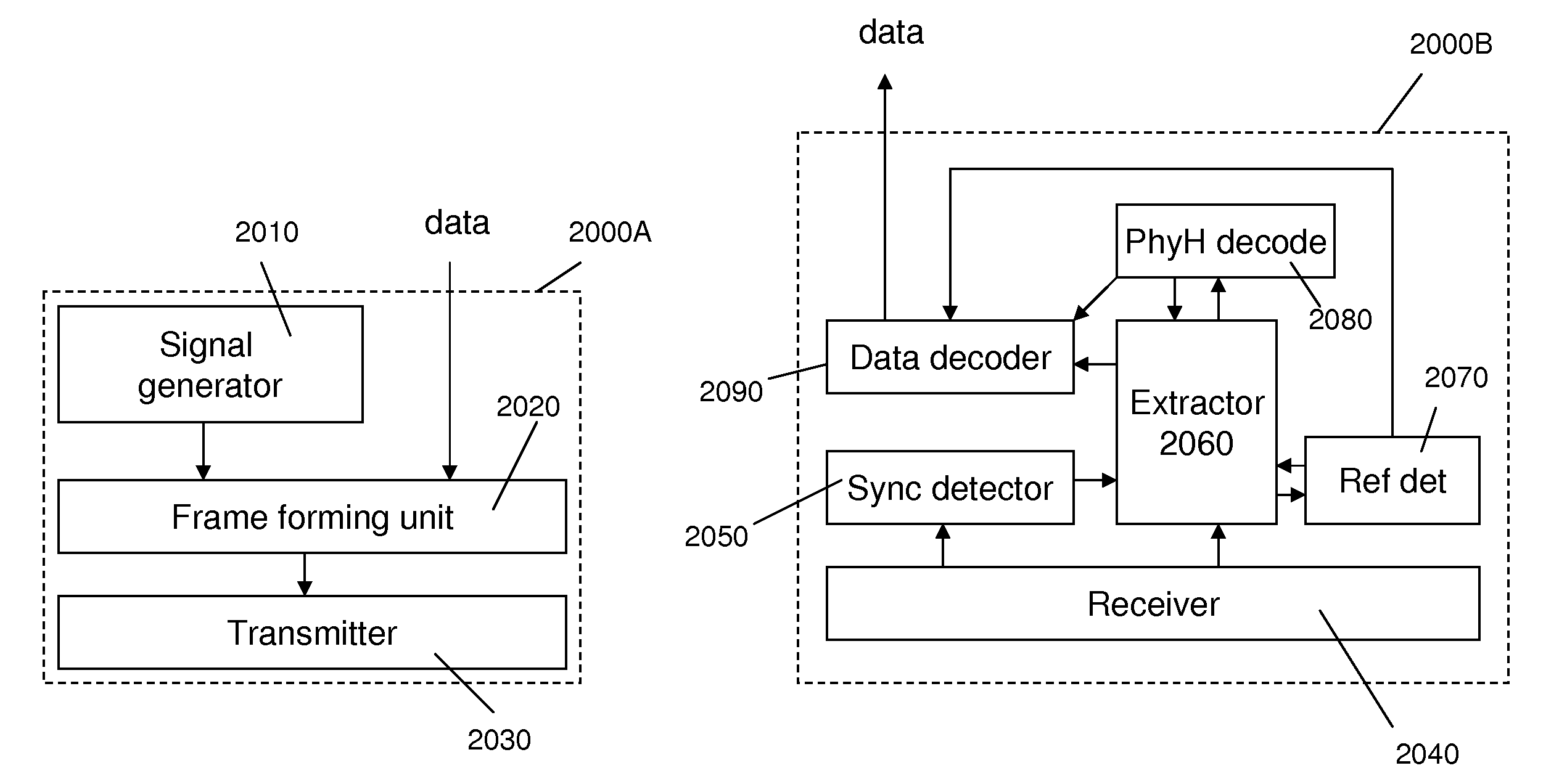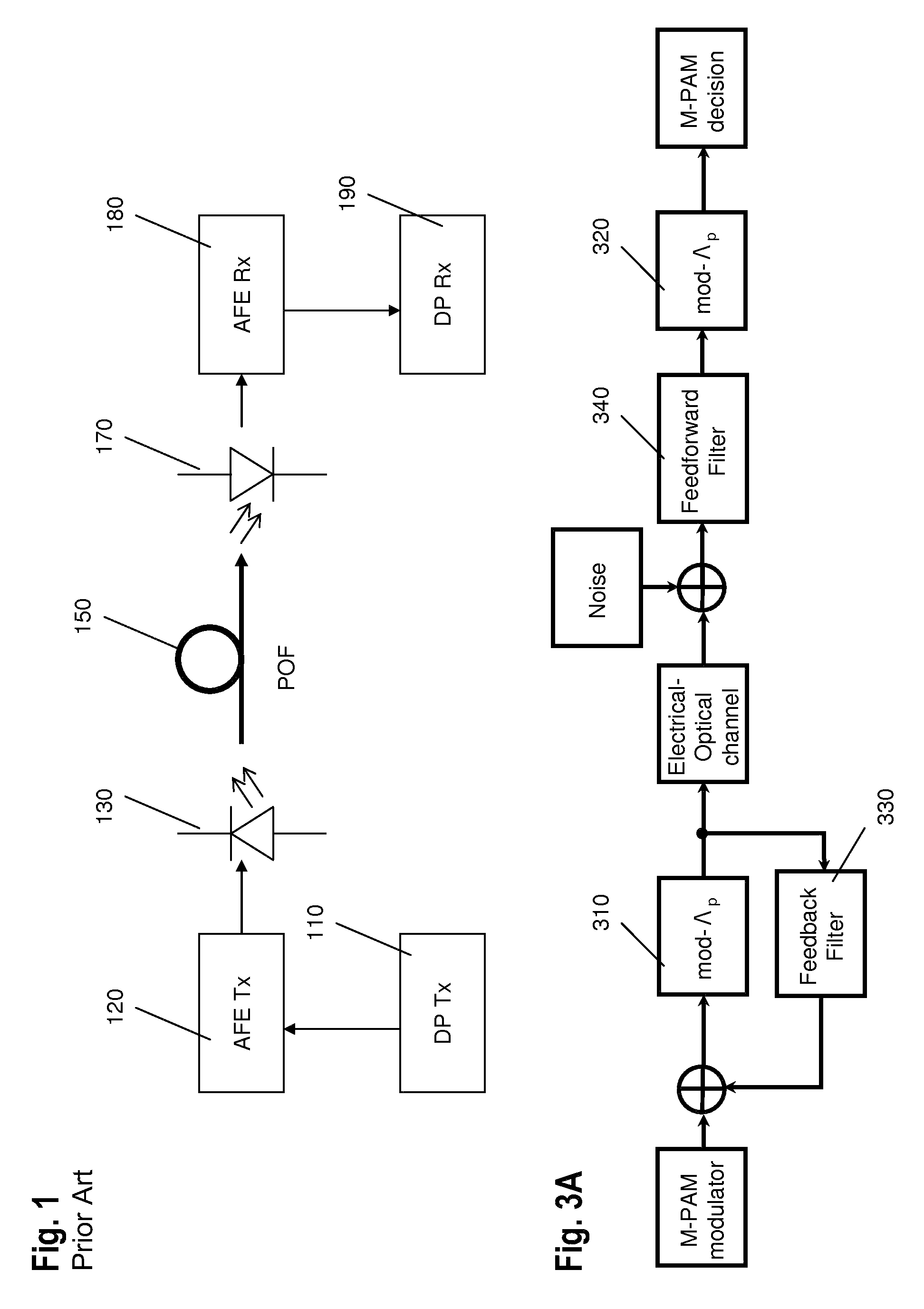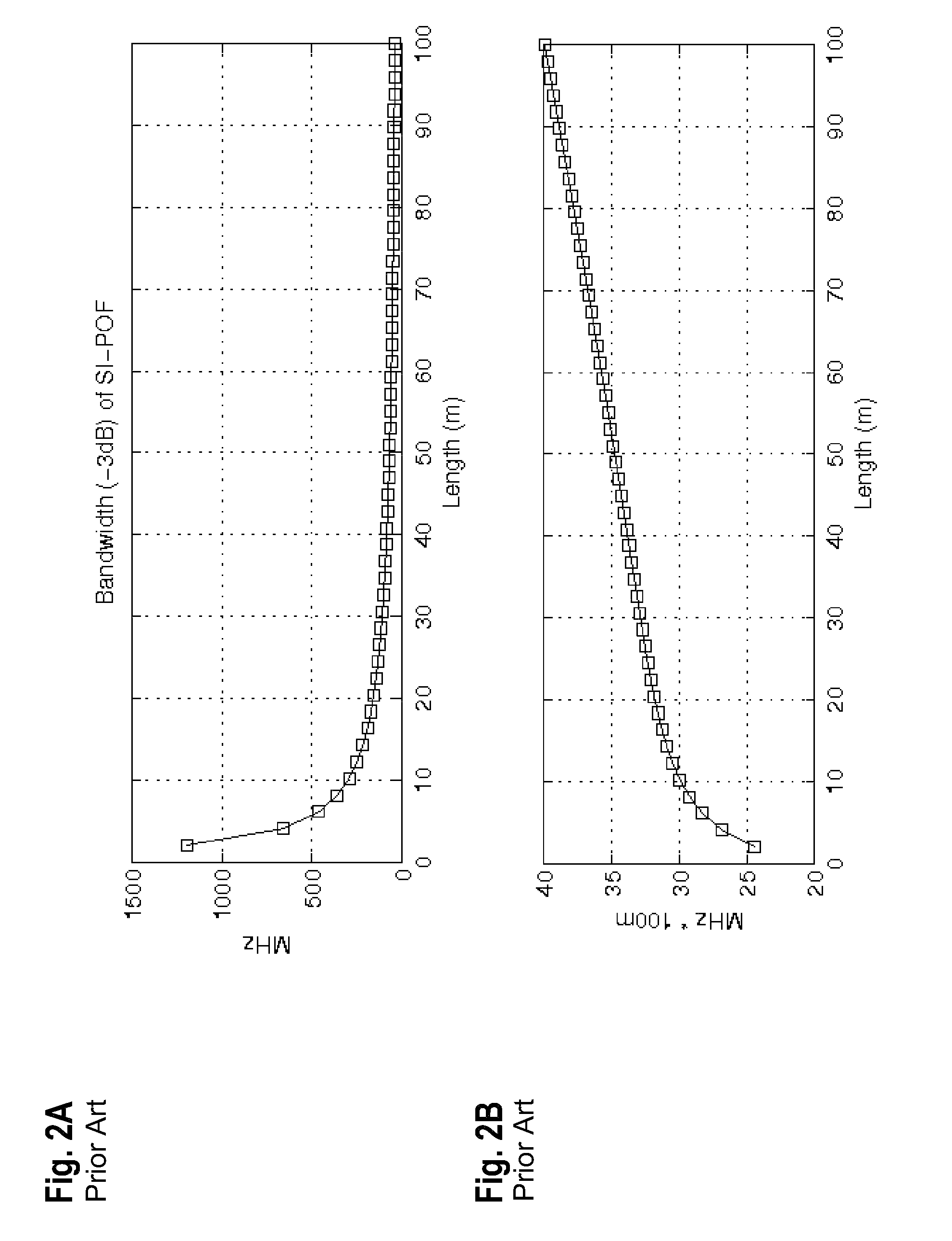Frame structure for adaptive data communications over a plastic optical fibre
a technology of adaptive data communication and plastic optical fiber, which is applied in the direction of fiber transmission, time-division optical multiplex system, electrical apparatus, etc., can solve the problems of harmonic distortion, high dependence of non-linear response on temperature, and high cost of connector tools and installation workers
- Summary
- Abstract
- Description
- Claims
- Application Information
AI Technical Summary
Benefits of technology
Problems solved by technology
Method used
Image
Examples
Embodiment Construction
[0070]The problem underlying the present invention is based on an observation that techniques typically used for optical glass fibre are not sufficient to achieve an efficient transmission of data over a plastic optical fibre. Due to a difference between characteristics of plastic optical fibre channels compared to glass optical fibres, wireless or copper channels, the techniques developed and employed for such channels are also not directly applicable to plastic optical fibres. It is one of the aims of the present invention to enable a highly spectrally-efficient data communications over POF.
[0071]One of the general criteria for designing a communications system is maximizing the capacity of the channel. Channel capacity bound can be calculated in accordance with the information theory using the Shannon limit on rate defined as maximum mutual information of a random variable at the input and the output of the channel. However, in practice it is difficult to achieve such theoretical...
PUM
 Login to View More
Login to View More Abstract
Description
Claims
Application Information
 Login to View More
Login to View More - R&D
- Intellectual Property
- Life Sciences
- Materials
- Tech Scout
- Unparalleled Data Quality
- Higher Quality Content
- 60% Fewer Hallucinations
Browse by: Latest US Patents, China's latest patents, Technical Efficacy Thesaurus, Application Domain, Technology Topic, Popular Technical Reports.
© 2025 PatSnap. All rights reserved.Legal|Privacy policy|Modern Slavery Act Transparency Statement|Sitemap|About US| Contact US: help@patsnap.com



